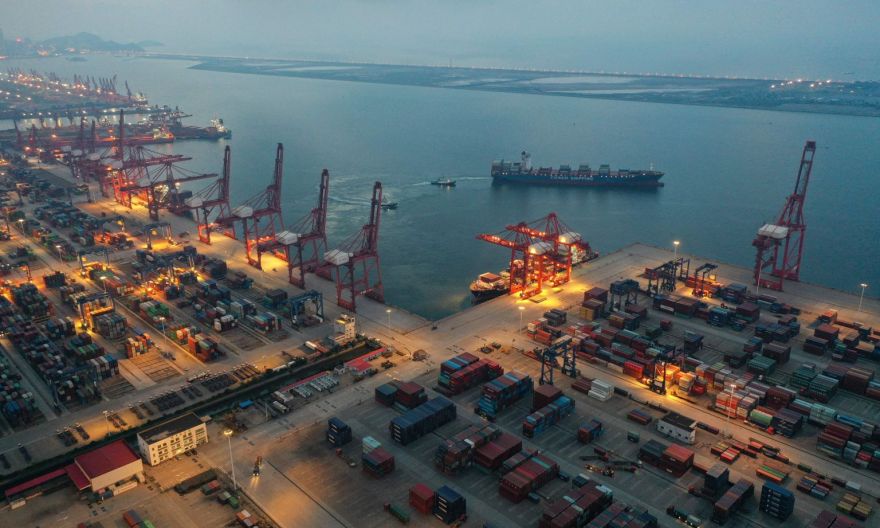China’s export slowdown in July may signal more bumps ahead

BEIJING (REUTERS) – China’s export growth unexpectedly slowed in July following outbreaks of Covid-19 cases, while imports also lost momentum, pointing to a slowdown in the country’s industrial sector in the second half even as easing global lockdowns boost commerce.
The world’s biggest exporter staged an impressive economic rebound from a coronavirus-induced slump in the first few months of last year after quickly containing the pandemic, and its rapid vaccination roll-out has helped drive confidence.
But new infections in July, mainly caused by the highly transmissible Delta strain, have spread to tens of Chinese cities, prompting the local authorities to lock down affected communities, order millions to be tested and temporarily suspend operations of some businesses, including factories.
Seasonal floods and bad weather last month also affected industrial production in some areas, including central China.
Exports in July rose 19.3 per cent from a year earlier, compared with a 32.2 per cent gain in June. Analysts polled by Reuters had forecast a gain of 20.8 per cent.
“The pandemic worsened in other Asian developing countries, which may have led to a relocation of trade towards China. But leading indicators suggest exports may weaken in the coming months,” said Pinpoint Asset Management chief economist Zhiwei Zhang.
Outbreaks of Covid-19 cases in eastern and southern Chinese provinces, the country’s main export hubs, had crimped factory output.
Aside from the drag from efforts to counter the spread of the Delta variant, Chinese exporters also struggled with an ongoing global semiconductor shortage, logistics bottlenecks, and higher raw material and freight costs.
“Although orders are recovering, there are too many uncertainties in the second half of the year, like how the domestic epidemic develops and the cost of raw materials. And at the same time, foreign production capacity is slowly picking up,” said an exports sales manager based in Suzhou surnamed Ye.
Imports in July rose a slower 28.1 per cent from a year earlier, lagging behind a 33 per cent increase forecast in the Reuters poll, and a 36.7 per cent growth the previous month. Demand has dropped in recent months for iron ore, a key ingredient in steel making.
China’s crude oil imports, however, rebounded in July from a six-month low as state-backed refiners ramped up output after returning from maintenance.
China’s factory activity expanded at a slower pace in July because of higher raw material costs, equipment maintenance and extreme weather.
The slower Chinese shipments also reflected the moderation in US business in July amid supply constraints, suggesting a cooling in the world’s biggest economy after what was expected to have been a robust second quarter.
China posted a trade surplus of US$56.58 billion (S$76.6 billion) in July, compared with the poll’s forecast for a US$51.54 billion surplus and US$51.53 billion surplus in June.
Its trade surplus with the United States rose to US$35.4 billion, Reuters calculations based on customs data showed, up from US$32.58 billion in June.
The economy is on track to grow more than 8 per cent this year, but analysts say pent-up coronavirus demand has peaked and forecast that growth rates are starting to moderate.
